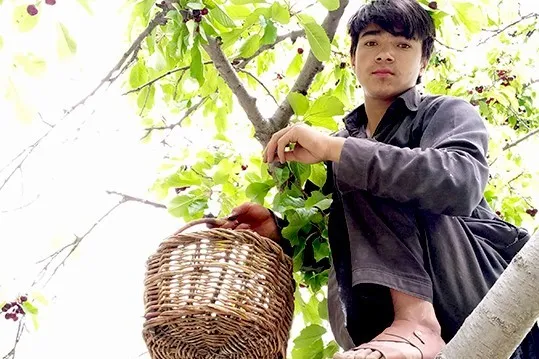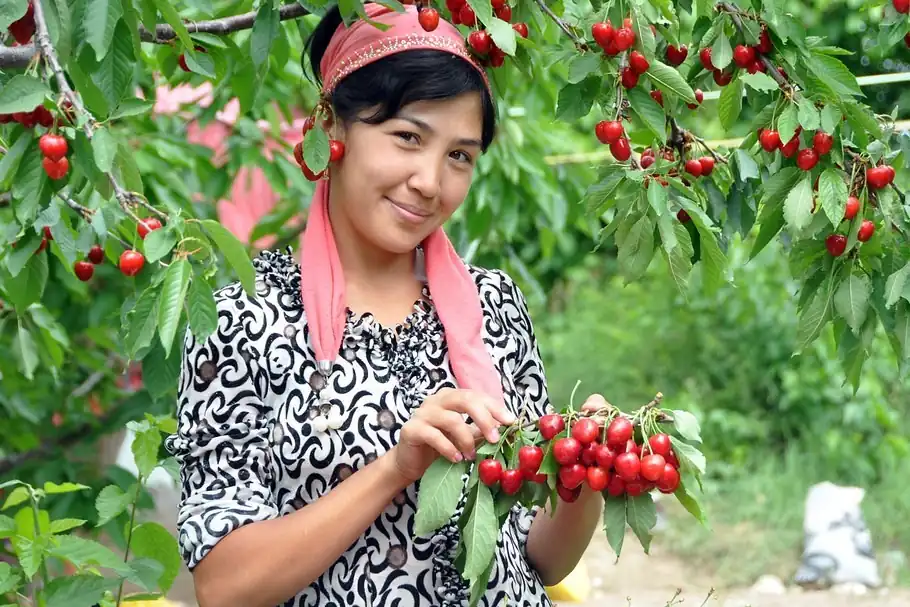Located in South Asia, Pakistan covers an area of 796,095 km², extending between 24° and 37° north latitude and 61° and 77° east longitude. The ecological and geographical diversity of this country facilitates the cultivation of a wide range of fruit products, including sweet cherries.
Numerous cultivars are found in the temperate regions of Pakistan, cultivated on 2,512 hectares of land, with an average yield of 2.42 t/ha. This diversity is most evident in the Gilgit-Baltistan region, which accounts for 64.77% of the nation's total cherry production.
It is followed by Balochistan and Khyber Pakhtunkhwa with 32.92% and 2.31% respectively. The cultivation of a wide range of sweet cherry genotypes is facilitated by the unique environment created by the different climatic conditions along the altitudinal gradients of Gilgit-Baltistan.

Cherry cultivation in Pakistan
These conditions not only favour the natural diversification of cherry genotypes but also extend the harvest season, which begins in mid-May at lower altitudes, such as in Gilgit, and continues until August in the upper Hunza region, located at an altitude of 3,000 meters.
The study, based on 43 morphological characters standardized according to the descriptors of the International Board for Plant Genetic Resources (IBPGR) and the International Union for the Protection of New Varieties of Plants (UPOV), revealed a surprising genetic richness.
Principal component analysis (PCA) revealed that the first ten components explain over 74% of the total variability. Among the most determining traits in characterizing the genotypes are plant habit, anthocyanin coloration of young shoots, petal and fruit morphology, fruit adherence to the peduncle, skin color and thickness, as well as taste aspects such as acidity and sweetness.
Genetic variability and analysis
Further analysis, conducted using a clustering-based dendrogram, revealed the presence of two main genetic groups, which were further subdivided into classes and subclasses. Interestingly, only about 10% of the total variability is due to differences between classes, while almost 90% resides within them – a clear indication of the rich genetic heterogeneity present even among similar individuals.
Quantitative data also support this observation, showing wide variations in key traits: from the thickness of the shoots (8.35–11.21 mm) to the diameter of the flowers (26.45–35.08 mm), and finally to the size of the fruits (weighing between 5.80 and 9.60 g, with a height between 19.70 and 28.80 mm).
Significant variations were also found in leaf length and width, petioles, and pits. From a phenological perspective, three genotypes – 'Corneta', 'Grace Star', and 'Early Rivers' – stood out for their early ripening.
Implications for agriculture
This data has direct implications for the local agricultural economy: in a region prone to late-season weather events, early varieties offer a competitive advantage in terms of both yield and market access.
In conclusion, this study not only provides a detailed snapshot of the morphological diversity of sweet cherry in the region but also lays the groundwork for future genetic improvement programs.
The collected information represents a strategic resource for developing high-quality cultivars adapted to the specific conditions of Gilgit-Baltistan, and for conserving valuable genetic heritage in the context of climate change and increasing agricultural pressures.
Source: Pak. J. Agri. Sci., Vol. 62(3), xxx-xxx; 2025, ISSN (Print) 0552-9034, ISSN (Online) 2076-0906, DOI:10.21162/PAKJAS/25.521
Image source: ARABNEWS
Melissa Venturi
University of Bologna (IT)
Cherry Times - All rights reserved













